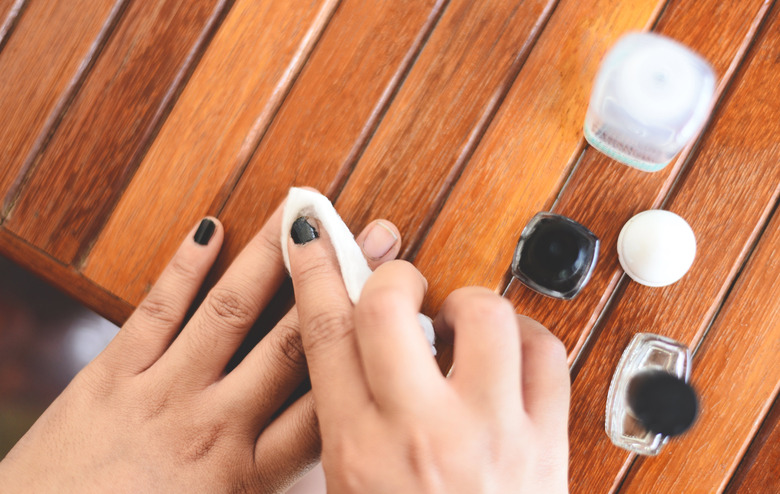How To Get Rid Of The Smell Of Acetone
We may receive a commission on purchases made from links.
Acetone is a clear, strong-smelling chemical used in manufacturing and as a solvent. The strong acetone smell is extremely irritating, and there are numerous health risks associated with breathing acetone fumes, so it is important to clear the air as quickly as possible to protect yourself and your family members. The best way to get rid of the smell is to increase ventilation in your home.
Using Acetone at Home
Using Acetone at Home
Acetone is used at home for a variety of purposes, mainly as a solvent to dissolve fingernail polish, paint, and varnish and for cleaning silkscreens after printing custom T-shirts or making art prints. When working with acetone, avoid smoking or using any kind of open flame, as it is extremely flammable.
Health risks from breathing the fumes include irritation of your eyes, throat, nose, and lungs, which may cause a sore throat, coughing, and dizziness. It can also result in nausea, vomiting, headache, and fainting. Acetone may damage your skin as well.
Removing the Acetone Smell
Removing the Acetone Smell
The best way to remove acetone and other smells from your home is to increase ventilation. Remove the acetone smell by opening windows to increase air circulation and turning on exhaust fans in the kitchen and bathroom to pull the odor out of the room. Put a box or window fan in the window to pull in fresh air and, if possible, put a second fan across the room or in an outside doorway to push the smelly air out. If you have a central heating or air conditioning system, turn the fan switch to "on" so it runs continuously to help ventilate your home.
A better solution to reducing and preventing a strong acetone smell indoors is to work outside in a sheltered carport or patio so the fumes diffuse into the air. In addition, wear latex or vinyl gloves, safety goggles, and a half-mask respirator with fresh cartridges to protect your skin, eyes, and respiratory system.
Eliminating Strong Odors Indoors
Eliminating Strong Odors Indoors
While acetone is the main ingredient in some brands of nail polish, they are not the only products used indoors that produce strong odors. Whether the odor is due to a nail polish smell, smoke, strong perfumes or colognes, paint, or cleaning products, it can permeate your living space and aggravate allergies, asthma, and other respiratory conditions. Whenever possible, use alternatives to acetone, including low-VOC (volatile organic compounds) products, to avoid contaminating the indoor air.
In addition to providing extra ventilation and air circulation, changing the furnace filter to a MERV 13 or higher-rated product captures particles in the air. If installing a high-efficiency filter is not an option, consider using a portable air purifier or a MERV 13 furnace filter taped to the back of a box fan to help clear the air. When using a homemade air-cleaning device, be sure to turn off the fan when you leave the room or house.
Odor-neutralizing products, such as sprays or bowls of baking soda or activated charcoal, can be placed strategically around the house to help reduce strong odors. Cleaning soft surfaces, such as curtains, carpets, and upholstery, also helps remove lingering odors trapped in the fabric. While in extreme cases you might consider using an ozone generator to remove odors from your home, ozone is not safe for humans and other creatures; you'd have to temporarily evacuate your home with your family and pets.
